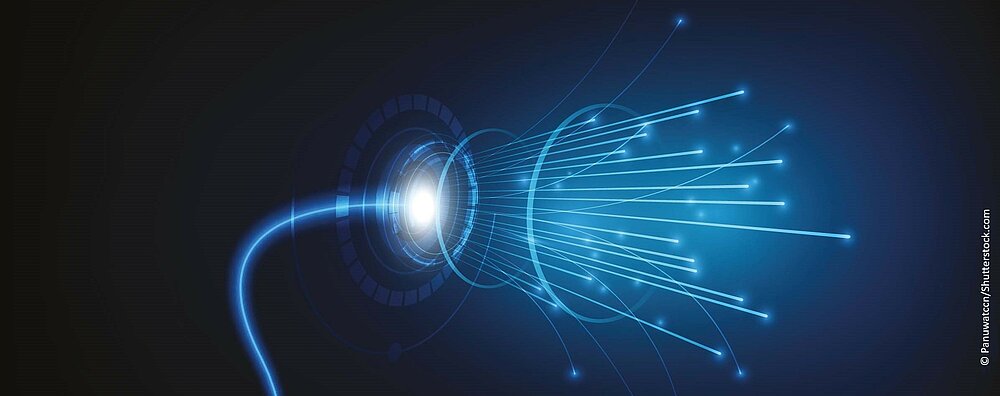
Facts
The required data rates for optical communication systems have been rising over the last decades and an end of this trend is not foreseeable. For high-speed transceivers to achieve the required symbol rates, the bandwidth needs to increase in both the electro-optical as well as the electrical components. The transmitter’s electrical components comprise the digital-to-analog converter (DAC) and the driver amplifier. For an integrated solution of driver amplifiers and in-phase/quadrature (IQ) modulators, please see section Related Products and Solutions.
Energy-efficient complementary metal oxide semiconductor (CMOS) DACs are the preferred choice for state-of-the-art transceivers. However, their bandwidth advancements with every new technology generation are saturating. Therefore, HHI is investigating novel DAC architectures using cost- and energy-efficient CMOS DACs in combination with high-speed integrated circuits. This way, the signals of multiple DACs are combined or interleaved to generate an ultra-broadband electrical signal. The following techniques are part of the research and development efforts: time-interleaving DAC (TI-DAC), analog-multiplexing DAC (AMUX-DAC), and frequency-interleaving DAC (FI-DAC). HHI covers the whole development cycle from writing the concept to building prototypes. Several high-speed 2:1 AMUX modules prototypes are available upon request.
The applications range from arbitrary waveform generators (AWGs) to fully integrated next generation high-speed DACs, which are then used in optical transceivers.